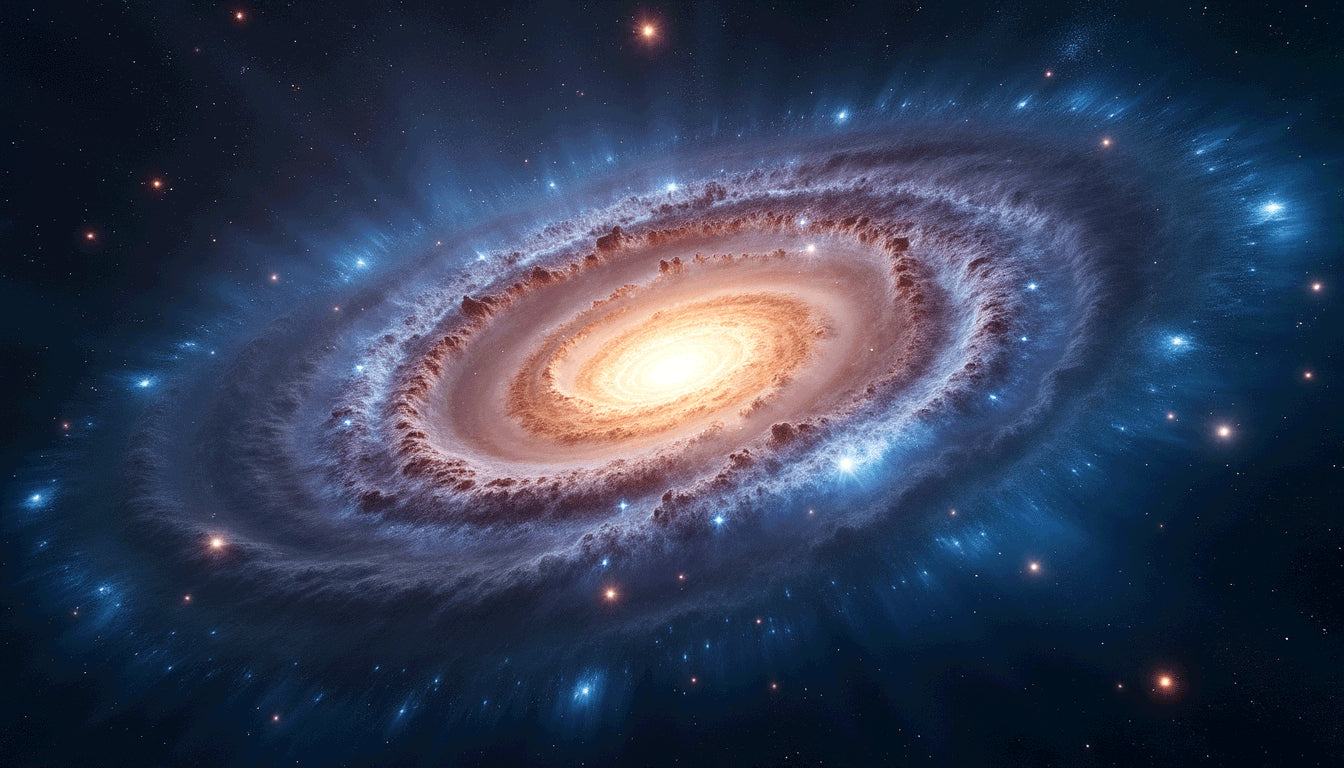✨ Technological innovation amazes us once again! 🌌 The world's most powerful supercomputer has just completed the most detailed simulation of the universe ever created. This technological achievement makes it possible to virtually recreate the entire evolution of our cosmos, from its beginnings to the present day.
The project marks a milestone in high-performance computing and computational astrophysics. The simulation of the universe shows the behavior of dark matter, the birth of galaxies, and energy patterns in space with extraordinary precision. Scientists can now study space phenomena that were previously beyond our reach. Discover the details of this fascinating advance in cosmological simulation with us! 🚀
The Power of the Frontier Supercomputer ✨
Computational astronomy reaches new heights! The Frontier supercomputer, developed at Oak Ridge National Laboratory, sets the highest standard in space simulations, surpassing all known limits in cosmic modeling.
Technical Specifications
Frontier's power is highlighted by its unique parallel processing features:
-
Processing Power: 1.1 exaFLOPS - Double the performance of Fugaku!
-
Processing system: 9,400 CPUs and 37,000 GPUs
-
Mass storage: 700 petabytes
HACC System 🚀
The HACC code (Hardware/Hybrid Accelerated Cosmology Code) represents an extraordinary technological leap in astronomical simulations:
-
15 years of continuous development
-
300 times better performance than the original version
-
Unique ability to simulate dark and conventional matter
Technical Highlights
Frontier sets new records in efficiency and exascale:
-
Energy consumption: 40 megawatts
-
Efficiency: 62.68 gigaFLOPS per watt
-
Cooling system: 22,000 liters of water per minute
-
Processing nodes: 9,000 units
The result! A machine capable of recreating the physics of the universe with unprecedented precision. From the birth of galaxies to the mysteries of dark matter, Frontier opens new windows on the cosmos and pushes the boundaries of computational science. ✨
Unprecedented Dimensions ✨
The largest simulation of the universe ever created! Computational astronomy reaches new heights with this virtual cosmos that surpasses all expectations for visualizing the universe.
Extraordinary Numbers
Simulation sets impressive records for big data in astronomy:
-
31 billion cubic megaparsecs of the expanding cosmos
-
2.1 trillion simulated particles
-
9.63 billion light years in length
-
3 petabytes of information generated
Technological Leap 🚀
An unprecedented advance in virtual space exploration! The precision achieved allows for the study of:
-
Galaxies smaller than the Milky Way
-
Huge clusters of galaxies
-
Hierarchical structures of the cosmos
Data Management
The system processes information on a massive scale, using artificial intelligence in cosmology:
-
Real-time analysis of millions of events
-
Detected 10,000+ supernova explosions
-
Collaboration with scientists in 66 countries
The simulation incorporates all the known elements of the universe in exact proportions. The result! A perfect recreation of the dance between dark and conventional matter, revealing the evolution of the universe. ✨

The Physics Behind the Simulation ✨
The simulation successfully reproduces the most fascinating phenomenon in the cosmos: the interaction between different types of matter, including atomic matter and hot gases.
Composition of the Virtual Universe
The distribution of matter shows surprising patterns, following the principles of General Relativity:
-
Dark matter : 85% of the total universe
-
Conventional material : Less than 5%
-
Dark energy : 70% of the content
Astrophysical Discoveries 🚀
New findings on dark matter! Simulation reveals:
-
Interactions beyond gravity
-
Function as a "structure compactor"
-
Precise formation of cosmic structures
Plasma Behavior
Plasma stands out for its unique characteristics in cosmological hydrodynamics:
-
Represents 99% of visible matter
-
Responds to electromagnetic fields
-
Forms filaments and double layers
The resulting structures display fascinating shapes, moving away from perfect spherical patterns. The result! A cosmic web of voids and filaments that faithfully reflects our universe and its expansion. ✨
Results for Astronomy ✨
Astronomy is reaching new frontiers! Cosmological simulations are opening up unexplored avenues for understanding our universe, complementing observations from telescopes in Chile and other virtual observatories.
Telescopic Precision
The results show extraordinary precision:
-
Validated virtual observations
-
Traditional and computational methods complement each other
-
More accurate data than ever!
Galactic Secrets 🚀
The simulation reveals fascinating patterns in star formation and the evolution of galaxy clusters:
-
3D structures of the Milky Way
-
Dynamics of globular clusters
-
Behavior of black holes
-
Primordial interstellar medium
Computational Advances
New tools revolutionize astronomy!
-
Detailed simulations of the cosmos
-
Artificial intelligence accelerates complex analysis
-
United theoretical and numerical cosmological models
Quantum physics and astrophysics are in perfect harmony. The result: A deeper understanding of the mysteries of the cosmos. ✨
Extraordinary Results! ✨
The Frontier supercomputer marks a turning point in computational astronomy. The combined power of the HACC system and computational physics exceeds all expectations for cosmic discoveries!
Outstanding Achievements 🚀
-
31 billion cubic megaparsecs simulated
-
Accurate modeling of dark and conventional matter
-
New understanding of galactic formation
-
3 petabytes of data generated
Looking to the Future
The possibilities are endless! This revolutionary tool:
-
Validates existing theories
-
Opens new lines of research
-
Decipher mysteries of the cosmos
The virtual universe is becoming our space laboratory, bringing us ever closer to the secrets of the cosmos. Future projects, like the Rubin Observatory, will greatly benefit from these gravitational simulations and virtual observations. A unique window into the vastness of space! ✨ 🌌

